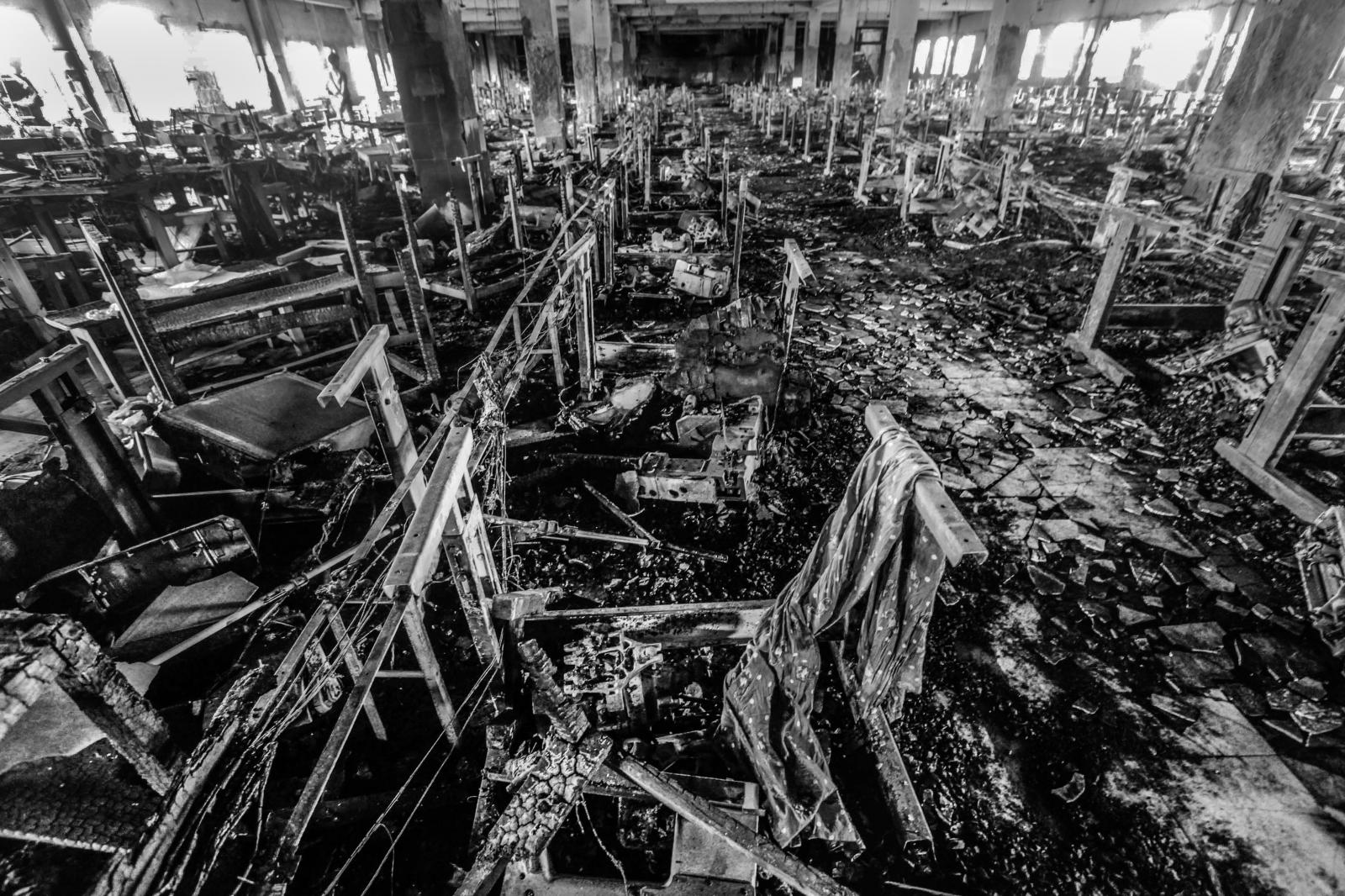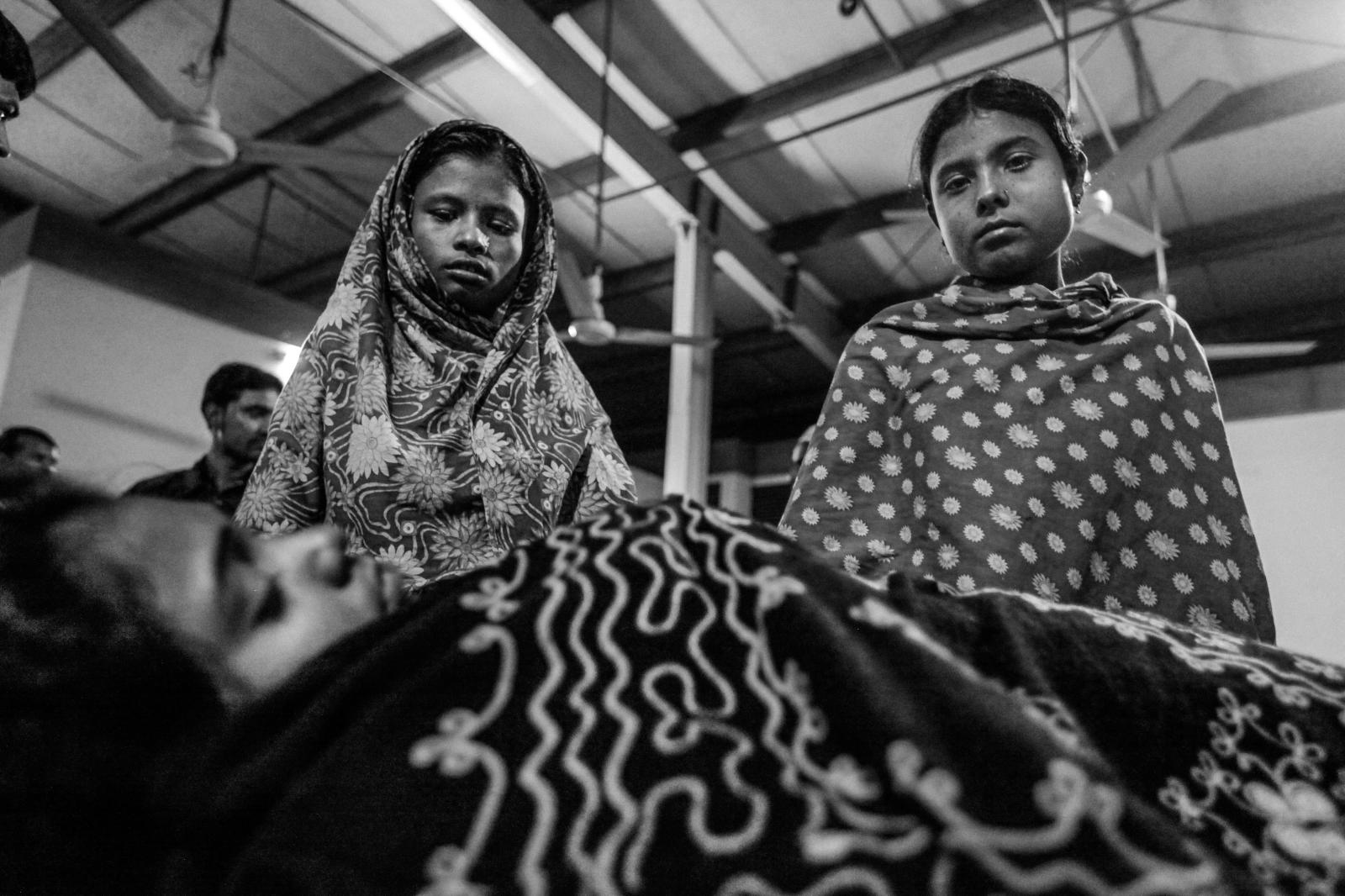Private Story
Bonded Stitches and Struggle
Harassment at the workplace, cry for raising the minimum wage, incidents of fire and building collapses are a daily routine for the struggling garment workers in Bangladesh. Even after all these hurdles, nearly four and a half million workers in Bangladesh are relentlessly weaving clothes for all the famous brands around to earn fame for the country and economic growth as well.
In miseries and injustice, the buildings of garment factories in Bangladesh are there standing. Incidents of fire and building collapses take place one after another but the actual reasons always remain unknown. Sabotage, faulty construction and authorization are always proven as the cause of fire incidents and building collapse.
The state seeks to ensure one-sided profits from the corporate trade at the cost of lives, labor and sweat of the helpless workers. For that reason, no exemplary judgment could be done for any garment disaster. In every case, the owners and the factory authorities avoided their responsibilities and liabilities branding those as an accident, disaster, or conspiracy.
If we look back, we will see countless workers have faced tragic death in the last 40 years due to lack of proper fire extinguishing systems, narrow stairs and unplanned construction. But still, there is no accurate count of how many workers have been killed, injured or went missing in fire incidents and building collapses in Bangladesh.
After every incident, if the number of death of workers is high, there are discussions in the media for several days. Each of the incidents seems a mere accident, a usual news element to the media.
On 26 November 2013, 116 workers were killed when the fire broke out at Tazreen Fashion, the country's largest factory located in Ashulia. Workers said that the main gate was locked and that's why the workers got stuck inside. Many jumped from the second floor of the factory building to escape the fire but ended up with physical and mental disabilities for the rest of their life. Another 54 workers were burnt to death as the men of KTS Garment owner in Chittagong put the factory’s main entrance under and key when fire originated on 23 February 2006. On 26 January 2013, a fire broke out in Smart Fashion Factory in Dhaka and six women workers had died. But the authorities covered it up as an accident.
On 28 April 2013, a fault was found in a garment factory, Rana Plaza, which was situated in Savar. The owners forced the workers to continue work with a warning that if they don’t work, they will lose their jobs. The workers came to work and then 1134 workers were tragically killed and about 2500 workers were injured when the factory building collapsed. On 11 April 2005, an eight-story building of Spectrum Factory in Savar collapsed and at least 63 workers were killed and injured more than hundreds in that incident.
After the Rana Plaza disaster, several safety measures were taken in the garment industry in Bangladesh under the pressure of international organizations and the media. However, the miseries of workers remained neglected. Thousands of workers are still working in an extremely discriminatory environment without getting compensation, medical treatment and job security.
From 2007 to 2014, I documented the daily struggles of garment workers in Bangladesh. I saw how Tahera Begum survived after jumping from the third floor of Tazreen Garments and how she went through horrible mental anguish for the rest of her life. I saw how Jasmin Begum struggled to survive with her little daughter after being rescued from the rubbles of Rana Plaza three days later. I saw how the workers bounced back again and again despite so many adversities and harassment, keep wavering clothes with a dream to accomplish their rights. For the garment workers in Bangladesh, the fire of torture and oppression is not at the workplace alone, they embrace the fire in their hearts too.
































